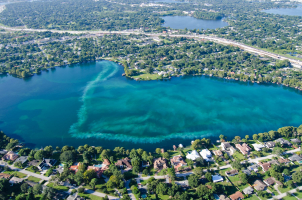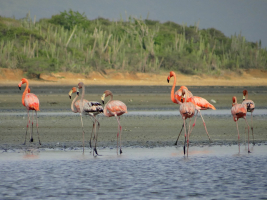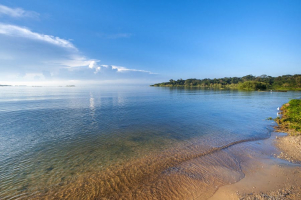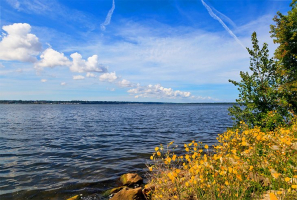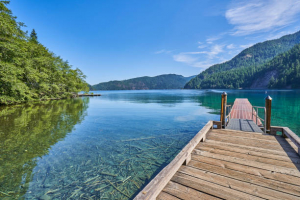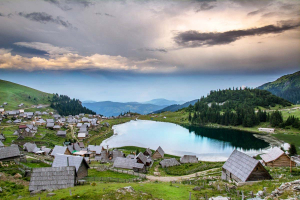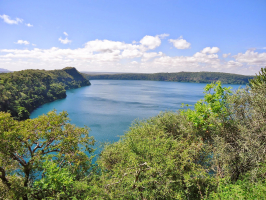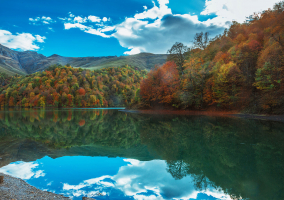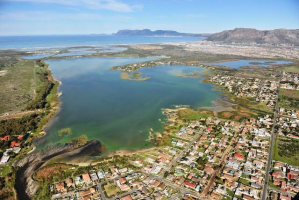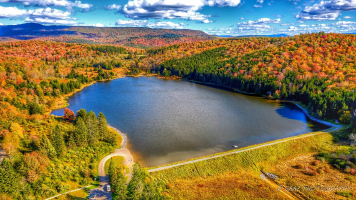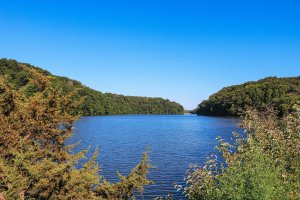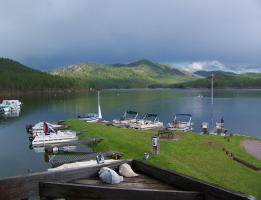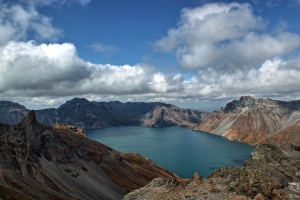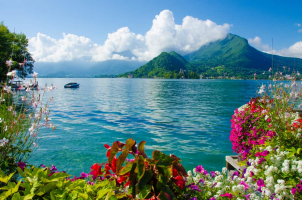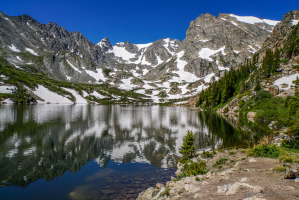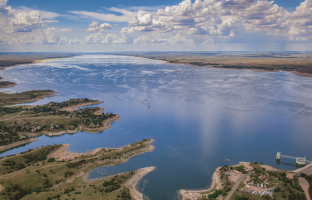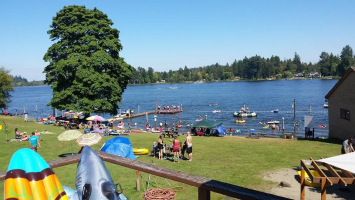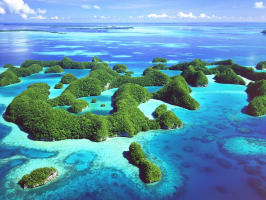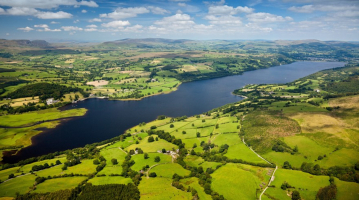Top 12 Best Lakes To Visit in The Rocky Mountains
The lakes are the ideal summer destination for those who want a place to relax and cool off without descending to cramped beach destinations. In a beautiful ... read more...region like the Rocky Mountains, there is no shortage of beautiful lakes. Let's join to discover the best lakes yo visit in the Rocky Mountains!
-
Yoho National Park, British Columbia, Canada, is home to Emerald Lake. One of the four contiguous national parks in Canada's Rocky Mountains, Yoho National Park is situated between the provinces of British Columbia and Alberta. The other parks are Kootenay, Jasper, and Banff. These federal reserves also include numerous provincial parks with nearly identical environmental protection and equally magnificent scenery. A luxurious lodge or hotel called Emerald Lake Lodge is situated on a peninsula that projects into the lake.
Tom Wilson, a Canadian guide, accidentally discovered Emerald Lake in 1882, making him the first non-native to see it. He initially arrived in the valley while pursuing a group of his horses that had run off. Wilson was the one who gave the lake its name because of its unusual hue, which reflects the green spectrum of sunlight rather than the blue spectrum seen in the nearby Moraine, Hector, Bow, and Peyto Lakes in Banff National Park due to a different rock type producing the sediment that is suspended in the glacial water.
The largest lake in Yoho National Park in the Canadian Rockies, Emerald Lake, is best visited in July. The emerald green sea is at its most beautiful then. The limestone powder in the lake's water gives it its tint. Waiting until July will allow you to experience the color at its best because the lake is typically iced over until June. However, if you go there in the winter, it's a terrific area to go cross-country skiing.
Location: Yoho National Park, British Columbia, Canada
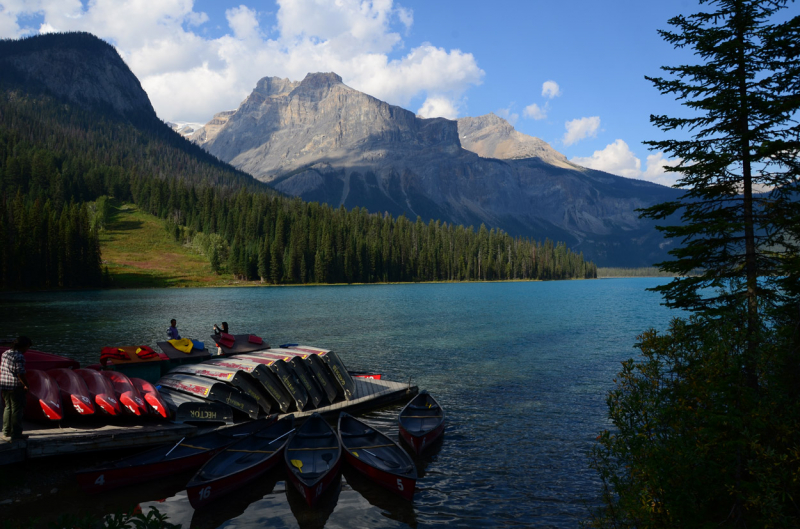
Photo: field.com 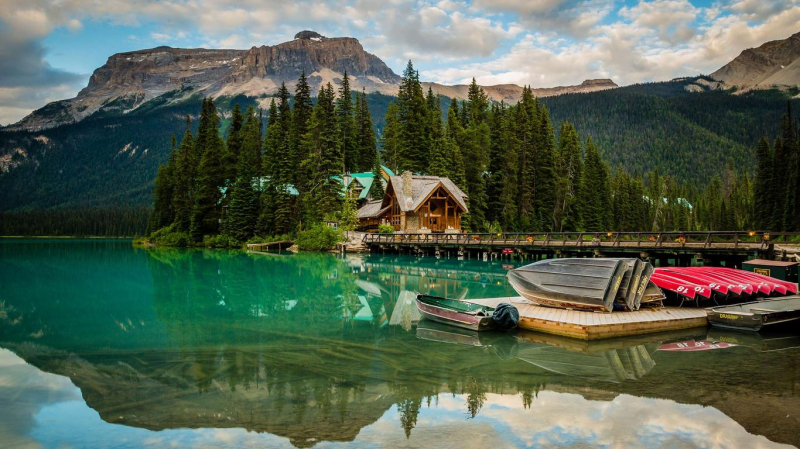
Photo: kayak.com -
Mills Lake which is one of the best lakes to visit in the Rocky Mountains is a stunning location in Colorado, a glacial lake with picturesque vistas. To get to the lake, there is a 5.4-mile route where you may take in the beautiful views. The journey up the mountain was worthwhile because it only takes two hours to finish. Mills Lake, which is a beautiful lake with a lot to see and do, is located at a height of 9,240 feet. Despite the fact that Mills Lake's water is too cold for most people to swim in, it is a well-liked spot for freshwater fishing.
The Glacier Gorge Trailhead, which is situated on Bear Lake Road about 8 miles from the turn-off at Highway 36, is where the hike to Mills Lake in Rocky Mountain National Park begins. You might want to think about using the free park shuttle to get to the trailhead during the busiest travel season due to the region around Bear Lake Road's extreme popularity. The Bear Lake Trailhead is another possible starting point for hikers. This will increase your total roundtrip mileage by two tenths of a mile.
The Glacier Gorge Backcountry Campsite (one site) is situated nearly half a mile above Jewell Lake and is ideal for hikers seeking to camp nearby. The only campground in the Glacier Gorge region is this one.
Location: Colorado, United States
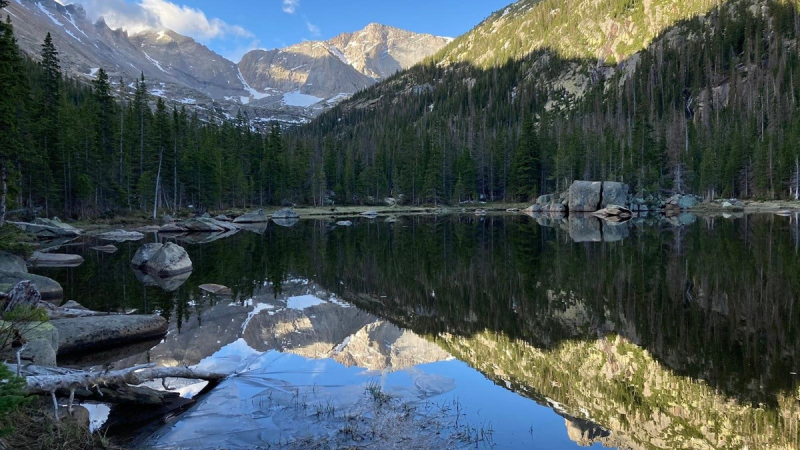
Photo: nps.gov 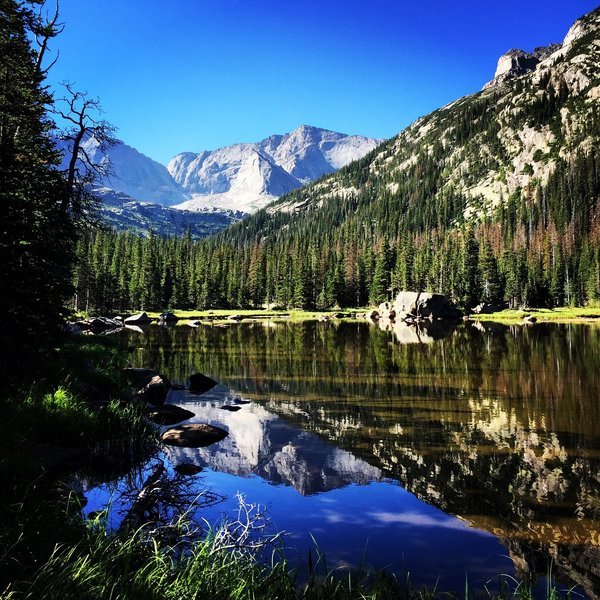
Photo: trailrunproject.com -
Located in Larimer County, Colorado, in the United States, Fern Lake is an alpine lake. It is the Big Thompson River's principal source.
The distance to Fern Lake from the Fern Lake Trailhead is approximately 9 miles roundtrip with an elevation gain of 1,453 feet. This hike is best suited for hikers with a moderate level of experience due to its length and terrain. This trail, which follows the Big Thompson River, provides excellent fishing chances (be sure to familiarize yourself with fishing regulations). After traveling 3.5 kilometers, you will also encounter Fern Falls, a 60-foot structure that empties into Fern Creek. There are major sun exposure stretches on the second half of the trail, and some of the areas is still recovering from the fall 2012 Fern Lake Fire.
There is a short stroll to the serene Fern Lake. Numerous tourists can enjoy outdoor leisure there, including backpacking, hiking, camping, and fishing. It is close to Estes Park, Colorado. Moose are frequently spotted drinking and swimming in the water by tourists. Numerous waterfalls and other lakes at high altitudes can be seen throughout the walk. Fly fishing is promoted in Fern Lake, which is a rocky body of water.
Location: Larimer County, Colorado, United States
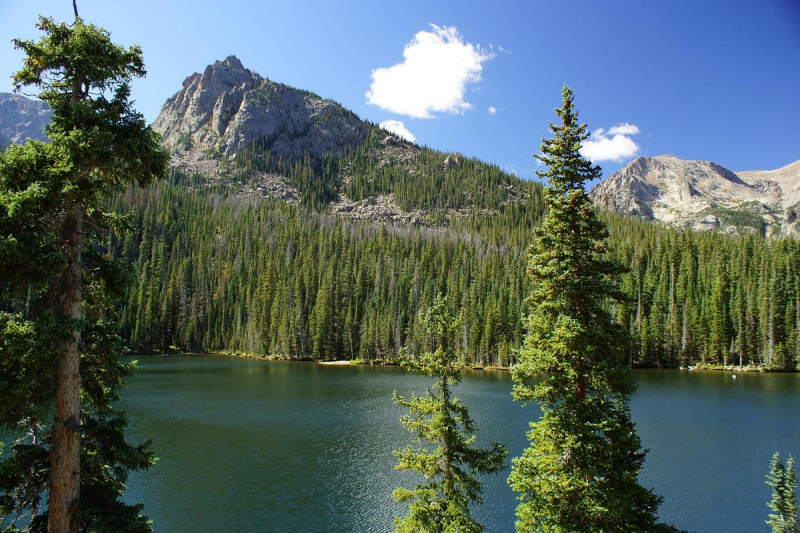
Photo: tripadvisor.com 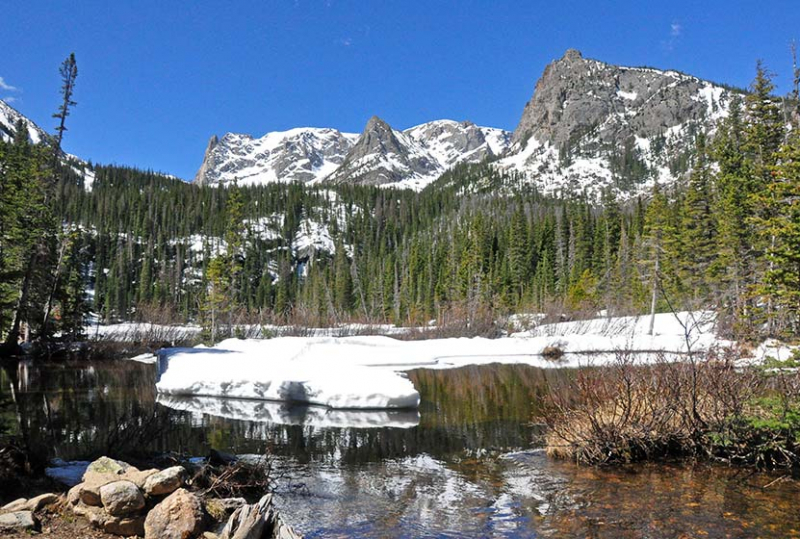
Photo: dayhikesneardenver.com -
The next position on the list of the best lakes to visit in the Rocky Mountains is Dream Lakes. East of the continental divide in northern Colorado, Rocky Mountain National Park is home to the high alpine lake known as Dream Lake. The lake is accessible from the well-known Bear Lake trailhead and is located at the foot of Hallett Peak. It is well recognized for the breathtaking views created by the surrounding high cliffs and is a well-liked location for leisurely trekking.
When the rising sun tints Dream Lake in Rocky Mountain National Park pink and purple in the early morning, it is positively dreamy. It is one of the most well-liked destination hikes in the park as a result. Families enjoy it because it is a simple climb.
You'll cross the lovely Nymph Lake along the route, but keep on to Dream. Pay a visit in the winter if you want to explore Dream Lake with little to no other visitors. Although snowshoes are required, the ethereal light that reflects off the snow and the frozen lake is worth it.
Location: Larimer County, Colorado
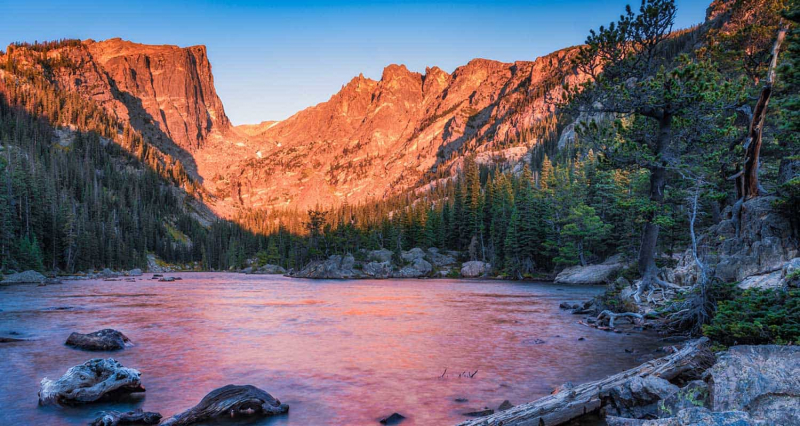
Photo: dayhikesneardenver.com 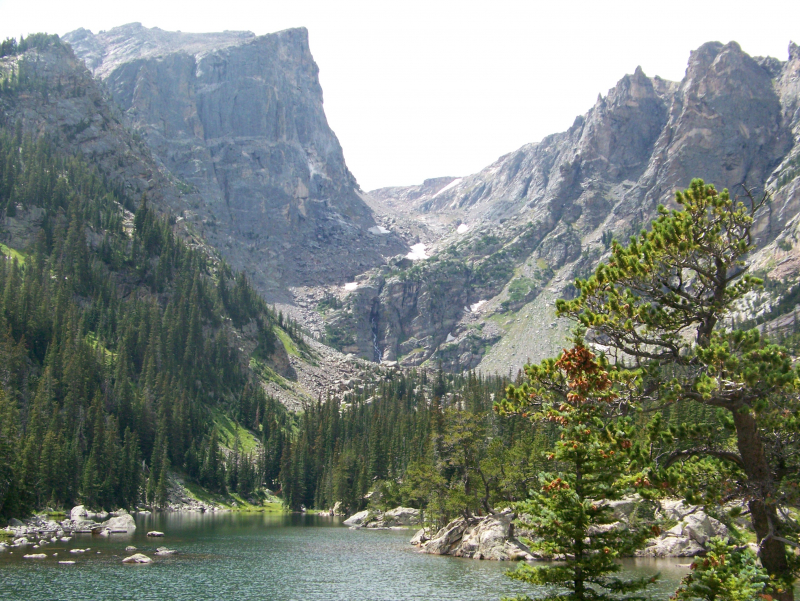
Photo: wikipedia -
On the boundary of Idaho and Utah in the Western United States is a natural freshwater lake called Bear Lake. It is roughly 109 square miles (280 km2) in size, divided evenly between the two states, and contains Utah's second-largest naturally occurring freshwater lake after Utah Lake. The lake's distinctive turquoise-blue color, brought on by the refraction of calcium carbonate (limestone) deposits suspended in the water, has earned it the moniker "Caribbean of the Rockies." Several distinct faunal species that are exclusively found in the lake have evolved as a result of the water characteristics of the lake. Bear Lake dates back more than 250,000. Fault subsidence, which still occurs today and is gradually deepening the lake on the eastern side, is what created it.
Due to the large number of attractions and recreational opportunities that are offered all year long, Bear Lake has become a well-liked vacation spot. Swimming, water skiing, jet skiing, boating, and sailing are popular summertime activities that lure people to the water. Travelers can also kill time by playing golf, exploring the nearby caverns, or riding their horses, bikes, ATVs, or foot along the mountain routes. Hunting, snow skiing, snowmobiling, or ice fishing are popular wintertime activities. Many visitors visit a nearby restaurant to try the "renowned raspberry shake" or the Pickleville Playhouse to attend a performance.
Location: Bear Lake County, Idaho
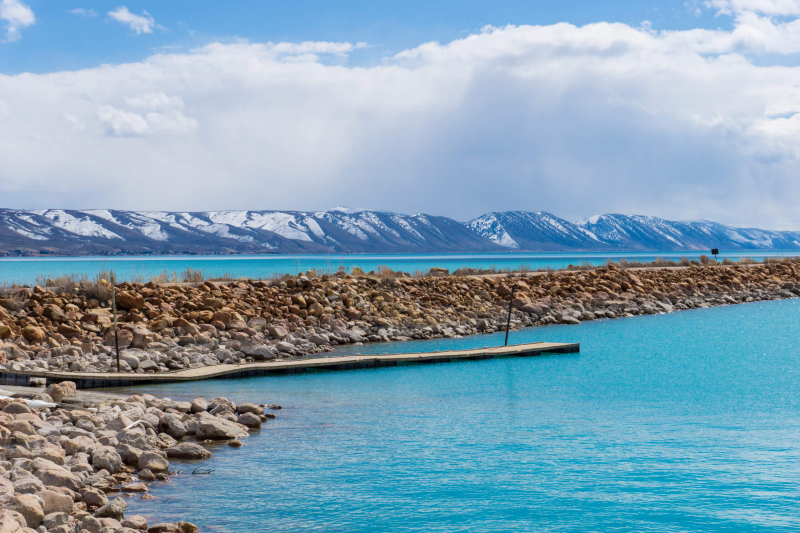
Photo: visitidaho.com 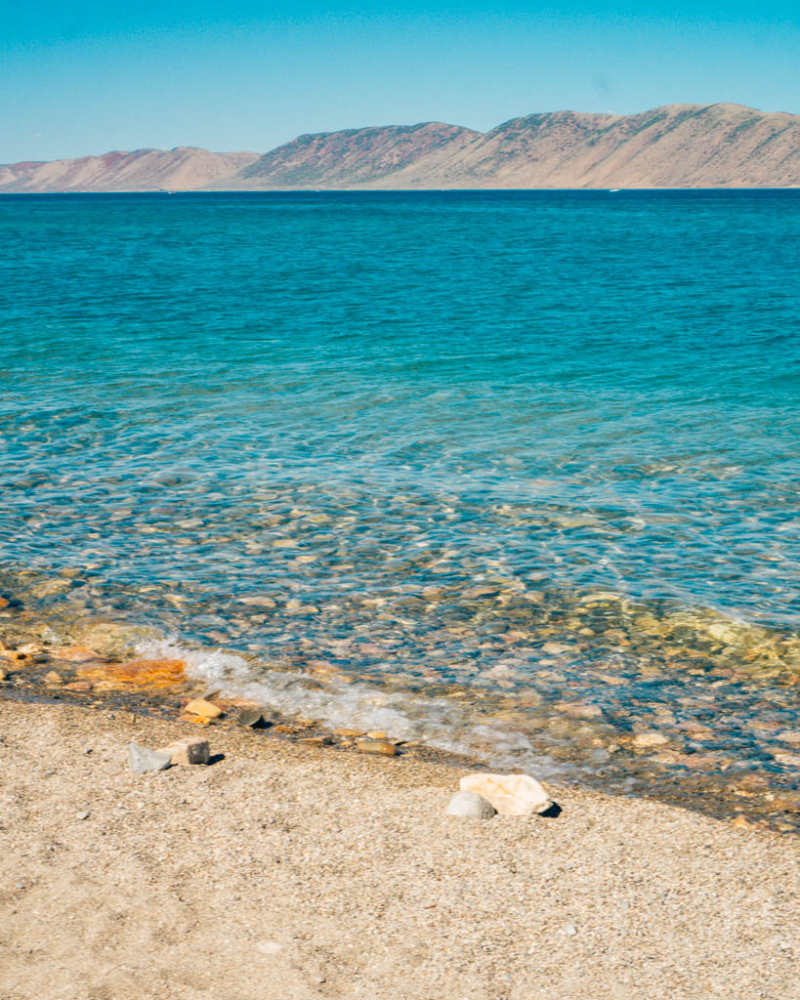
Photo: globetrottinggingertravel.com -
A typical Rocky Mountain National Park day trek leads to Timber Lake, which is located on the west side of the mountains where there are fewer people. The 4.6-mile route begins at a major trailhead in Kawuneeche Valley along US 34 just before the difficult climb up to Trail Ridge. Like many other paths in the park, most of the hike is through thick pine woods, albeit with occasional views of the valley and the surrounding mountains, but the trees are more dispersed towards the upper reaches, mingling with meadows and open streamways, and the forest stops completely shortly before the lake, which sits at the very upper end of a ravine at 11,060 feet elevation, lined by rocky slopes on three sides.
Timber Lake is one of the best lakes to visit in the Rocky MountainsThe maintained trail finishes here, although it is quite straightforward to climb the hillside to the south, up to a saddle above neighboring Julian Lake, and on to a flat summit that affords good views of the valley to the west. In the other direction, the land slopes up at a similarly moderate gradient by another 1,000 feet to Mount Ida on the continental divide. The trail is notable for a great number of different wildflower species, reflecting the varied habitats along the way, including streams, dry meadows, boggy meadows, moist and dry forests, lakeshore,s and tundra. The lake and the meadows are also renowned wildlife locations; elk and moose are frequently spotted, bears less often.
Location: several miles from the Timber Creek Trailhead on the west side of Rocky Mountain National Park
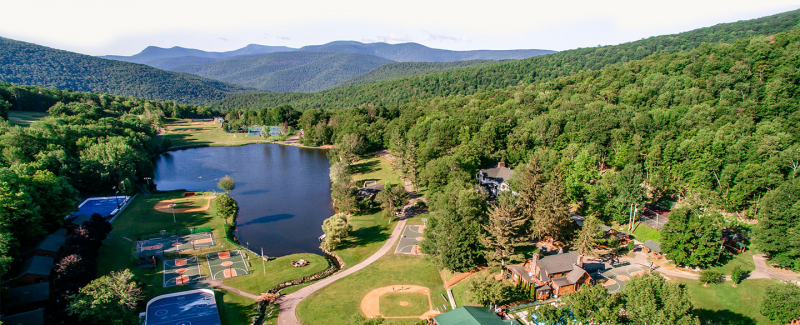
Photo: timberlakecamp.com 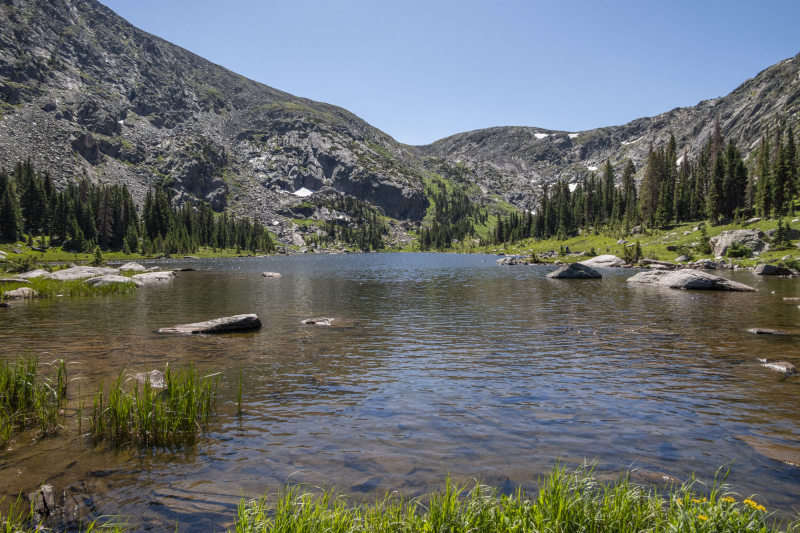
Photo: hike734.com -
Among the best lakes to visit in the Rocky Mountains is Black Lake. The 9.1-mile Black Lake Trail is challenging. Black Lake is so beautiful that the rough landscape is worth the strenuous climb. It is advisable to travel between March and October if you wish to avoid snow and bad weather. It is a wild and magnificent lake that wonderfully mirrors the rugged mountains in its immediate surroundings. Squirrels are prevalent throughout the trail and are surprisingly unafraid of explorers.
This magnificent alpine lake is located at the bottom of a deep cirque that was formed by the cutting of McHenrys Peak and Chiefs Head Peak. The Arrowhead will be the prominent sight off to your right as you approach from the north shore. The 13,327-foot McHenrys Peak will be almost right in front of you, and to the south, over the headwall, The Spearhead and 13,579-foot Chiefs Head Peak can be seen. The trail branches off to the left from the lake's base and eventually arrives at a few unmaintained social trails that lead to Blue Lake, Green Lake, and Frozen Lake.
Location: Estes Park, Colorado
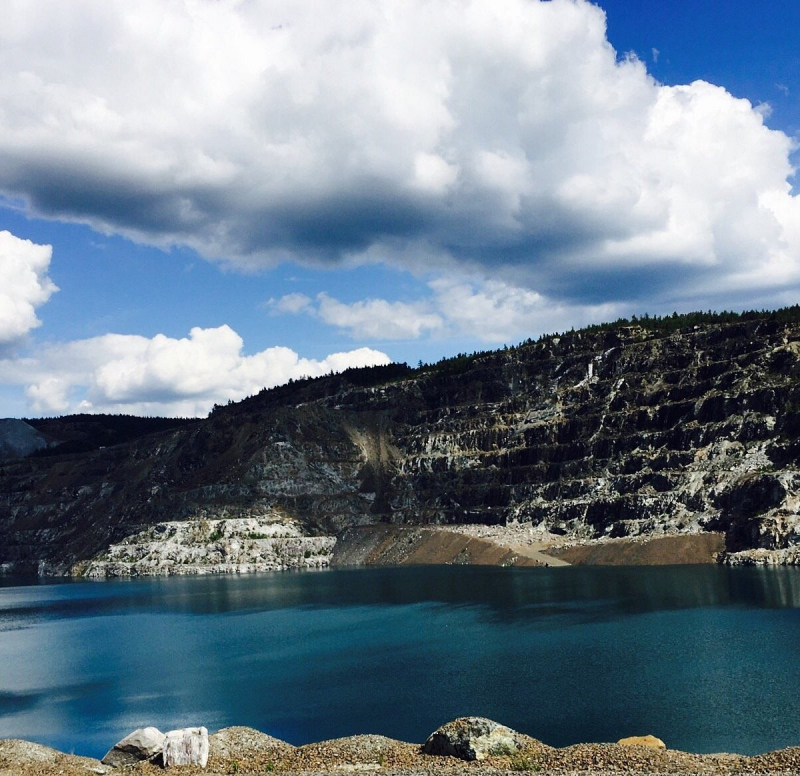
Photo: tripadvisor.ca 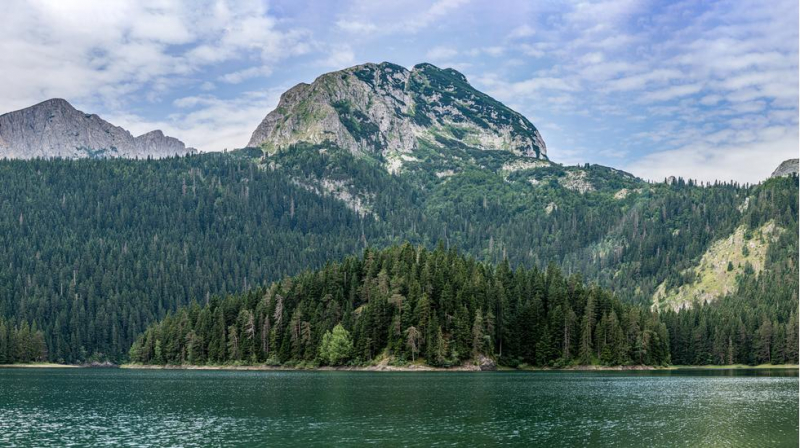
Photo: suitcasemag.com -
Gem Lake is one of the Rocky Mountains' most distinctive lakes. The granite domes that support this lake's location near the Lumpy Ridge Trailhead are red and orange, and it has neither an inlet nor an outlet stream. It is a little lake that gets naturally filled by snowmelt and rain. Near Gem Lake, rare wildflowers like Telesonix jamesii sprout from numerous huge boulders. The views on the way to Gem Lake are also breathtaking and extraordinary.
The lake has the fairly unique distinction of having neither an inlet or outlet stream. Instead, a basin cut out of the base of the granite cliff walls that encircle the lake catches snowmelt and rainwater that has been trapped.
The Lumpy Ridge Trailhead leads to the Gem Lake route. The Gem Lake Trail is a fantastic hike all year round due to its low elevation and southern exposure. As the trail ascends you'll pass various locations that give spectacular views of Estes Park, Longs Peak, and the surrounding mountains. You'll also travel past several locations with large boulders and fascinating rock formations. Paul Bunyan's Boot, possibly the most intriguing rock structure of all, is located about 1.4 miles away.
Location: north of Estes Park, Colorado
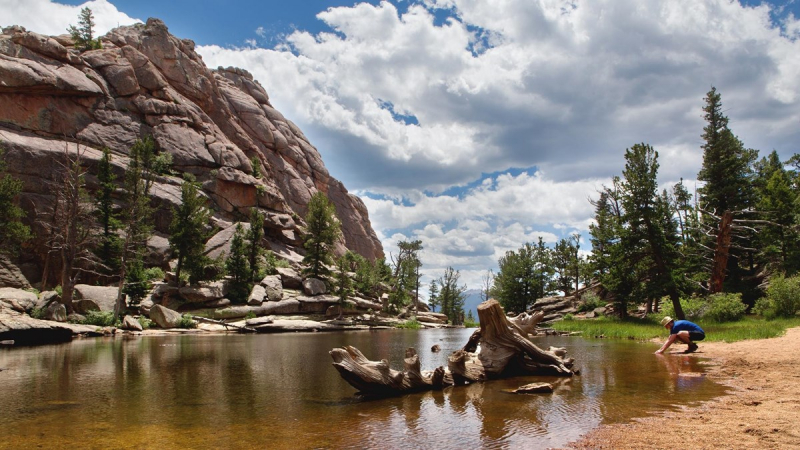
Photo: nps.gov 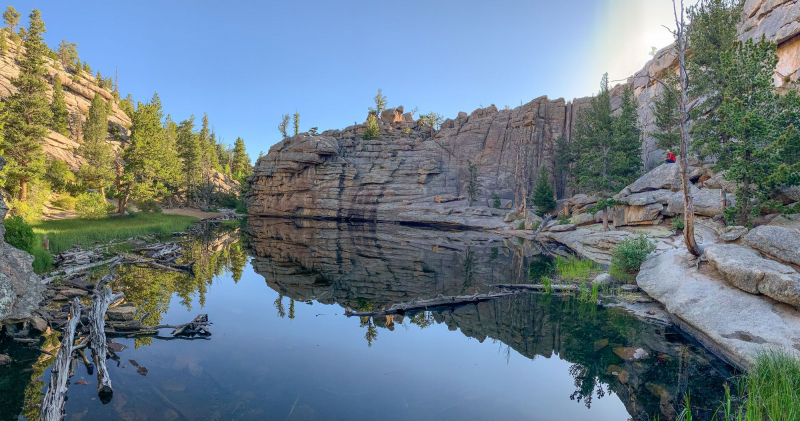
-
The next position on the list of the best lakes to visit in the Rocky Mountains is Peyto lake. A glacier-fed lake located in the Canadian Rockies' Banff National Park is called Peyto Lake. The Icefields Parkway is not far from the lake itself. Bill Peyto, a pioneering route blazer and trapper in the Banff region, was honored with his name.
The lake's distinctive bright turquoise color is caused by the significant amounts of glacial rock flour that flow into it from a nearby glacier during the summer. Photos of the lake frequently appear in illustrated books due to its vivid color, and the area around it is a well-liked tourist destination. Parks Canada finished enhancing the lake viewpoint, paths, and parking spaces in 2021. The highest point on the Icefields Parkway, Bow Summit, offers the greatest views of the lake.
Peyto Lake's deep turquoise waters contrast sharply with the mountains that surround it, yet the contrast adds to the beauty of the scene. This lake in Banff National Park is well-known for its vibrant color, which attracts photographers. The greatest location to view this large body of water is from Bow Point on the western Alberta Icefields Parkway. Hikers who want to get a different perspective might go up from there or even down to the lake.
Location: Banff National Park, Canadian Rockies
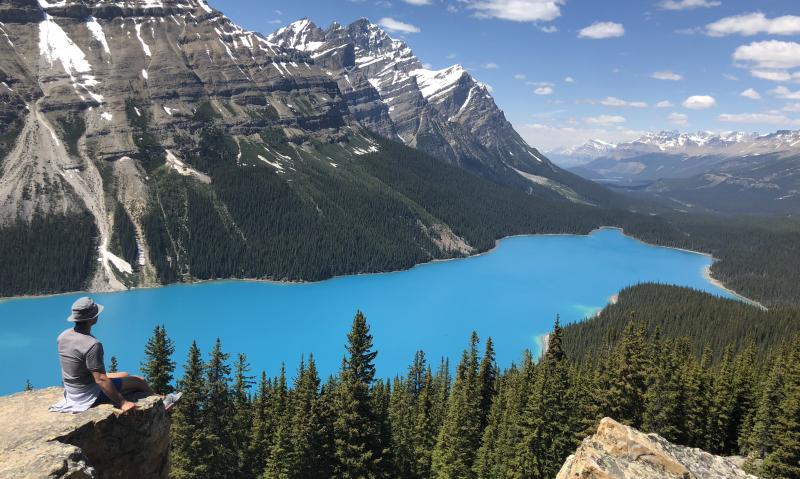
Photo: wikipedia 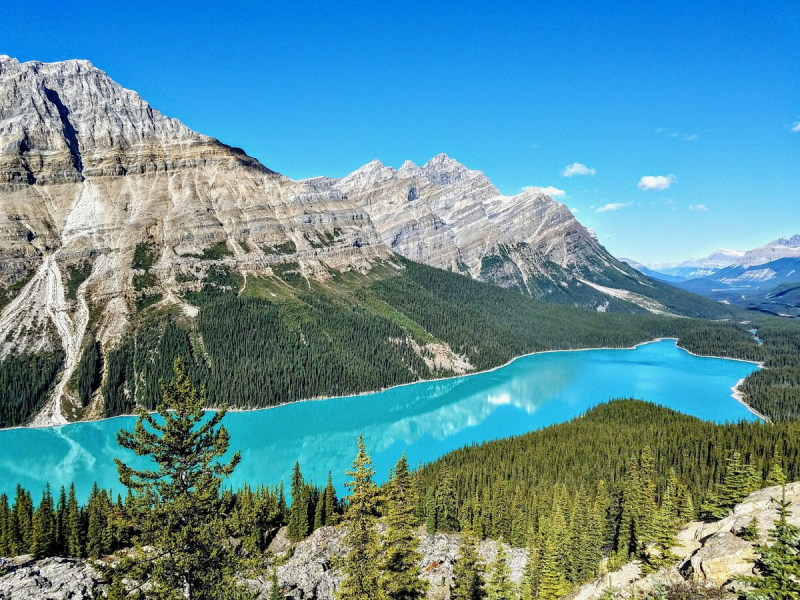
Photo: tripadvisor.com -
American lake named Hanging Lake. It is a well-liked tourist attraction and is situated in Glenwood Canyon, about 7 miles east of Glenwood Springs, Colorado. The Glenwood Canyon Bike and Pedestrian Path, which runs down the north side of I-70 at the bottom of the canyon, has a trailhead that can be used to access the lake while it is open. The trail follows Dead Horse Creek, a branch of the Colorado River, and ascends roughly 1,000 feet in height for 1.2 miles from the trailhead to the lake.
This lake is stunning, with numerous waterfalls and clear waters. Visitors who start their walk from the Hanging Lake Trail frequently go there. To reach the lake, visitors can anticipate a continuous ascent of at least 1,200 feet. Due to the extraordinary sensitivity of the travertine lake, pets, drones, fishing, and swimming are all strictly forbidden. Avoid bothering, feeding, or disturbing wild animals, especially in the winter when they are trying to conserve their energy. It is highly dangerous to walk on the ice during the winter, so tourists are strongly advised to keep off the frozen lake.
Location: Glenwood Canyon, Colorado
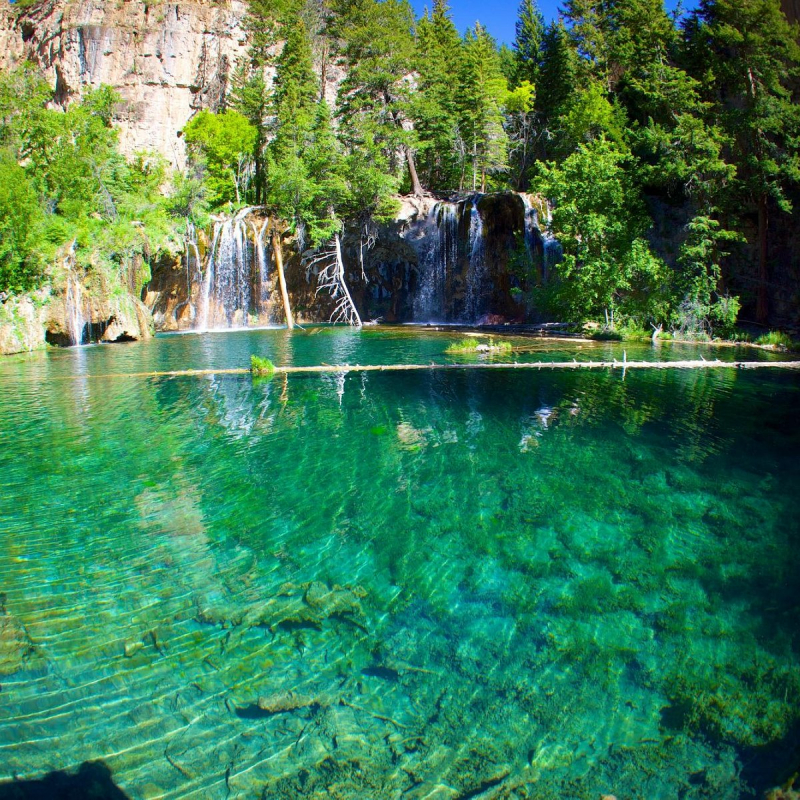
Photo: tripadvisor.com 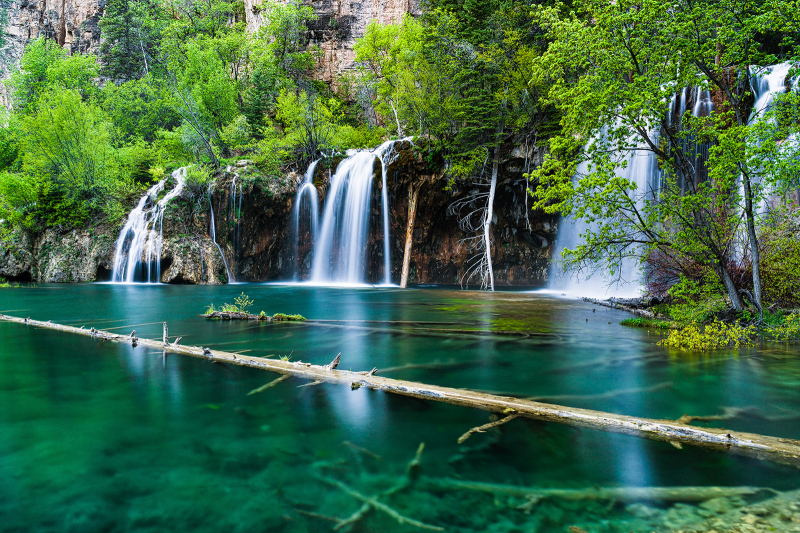
Photo: 5280.com -
About five kilometers northeast of the Banff townsite, in the eastern part of Canada's Banff National Park, is a glacier lake called Lake Minnewanka. The lake is the second-longest lake in the Canadian Rockies mountain parks at 21 km long and 142 m deep. The Cascade River, which flows south via Stewart Canyon and pours into the lake's western end, feeds the lake. It flows east of Cascade Mountain. The lake is also fed by a number of streams that descend from Mount Inglismaldie, Mount Girouard, and Mount Peechee on the lake's southern shore.
According to stone tools and a Clovis point spearhead found by archaeologists, Aboriginal people have lived in the area around Lake Minnewanka for a long time—possibly as early as 10,000 years ago. Elk, mule deer, bighorn sheep, and bears are just a few of the abundant wildlife in the area, and the simple access to rock in the rocky terrain made it possible to craft tools for hunting.
Aboriginal people lived near the lakeside following the ice age, and Clovis spearheads have been discovered there. Tourists can take advantage of the cruises that are offered on this lake. Along with other sports, the lakeshore offers fishing, mountain biking, hiking, canoeing, and diving. The area is rich in wildlife, making it a healthy natural vacation destination.
Location: Banff National Park, Canada
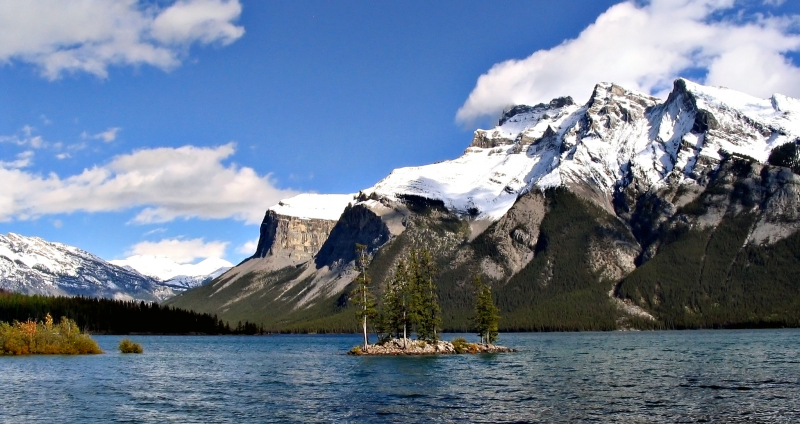
Photo: wikipedia 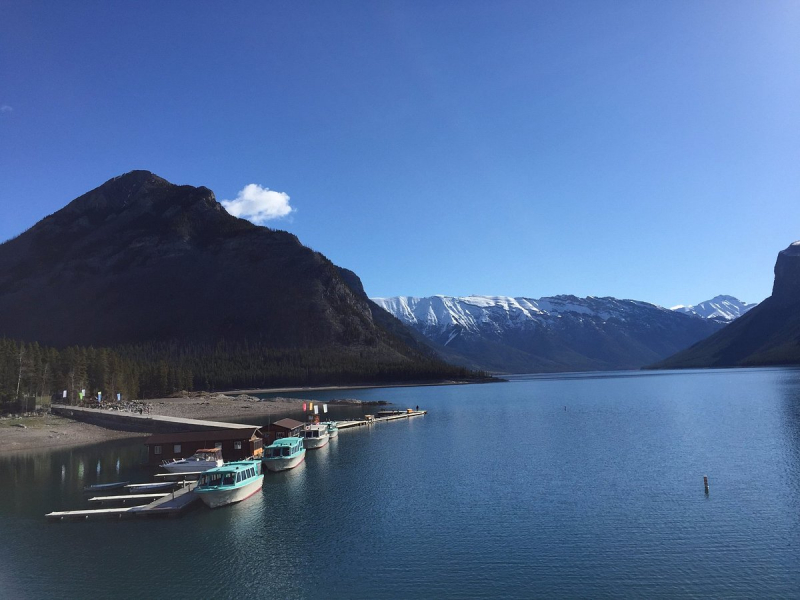
Photo: tripadvisor.com.vn -
The distance between the village of Lake Louise and Moraine Lake is 14 kilometers. Since the lake is glacier-fed, its spectacular blue-green color is caused by light reflecting off the rock flour (fine rock particles) in the runoff that flows into the lake. The lake doesn't start to melt until June at a height of 1,885 meters, where it is located. Late June is when water levels and color are at their highest.
Around the lake, there are a number of hikes that range from easy strolls to more challenging excursions. The Rockpile Trail is a simple, brief path that follows the rear of the moraine in switchbacks to the top of the natural dam. The landscape that appeared on the back of Canadian twenty-dollar bills printed between 1969 and 1979 is known as the "Twenty Dollar View," and it can be seen from the summit of the mountain. Cross-country skiers can go on a 15-kilometer thrilling journey to the end of the road and return throughout the winter. Parks Canada creates ski trails that go to the Consolation Valley and Ten Peaks viewpoint. Due to the significant avalanche risk from late November to early April, access to the lake is prohibited during winter.
Location: Banff National Park, Alberta
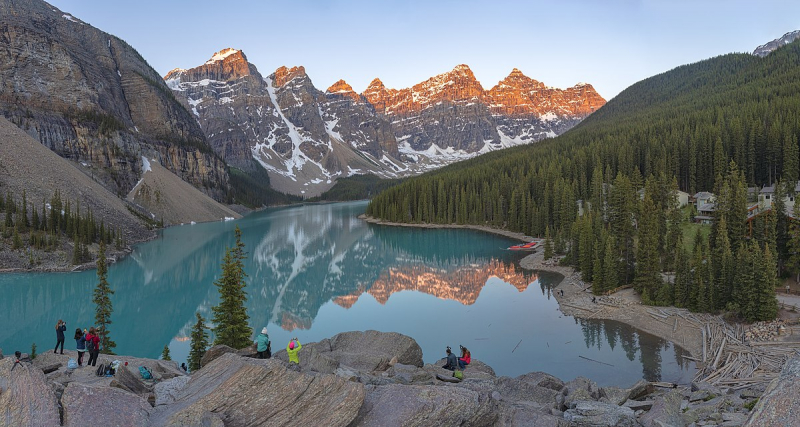
Photo: Wikipedia 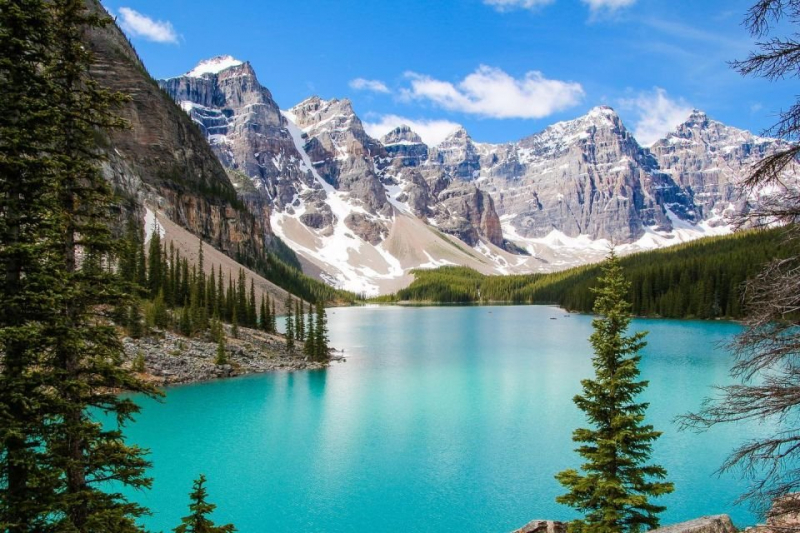
Photo: banfflakelouise.com














